Moxuan Han
Digitally-assisted photonic analog domain self-interference cancellation for in-band full-duplex MIMO systems via LS algorithm with adaptive order
Aug 03, 2022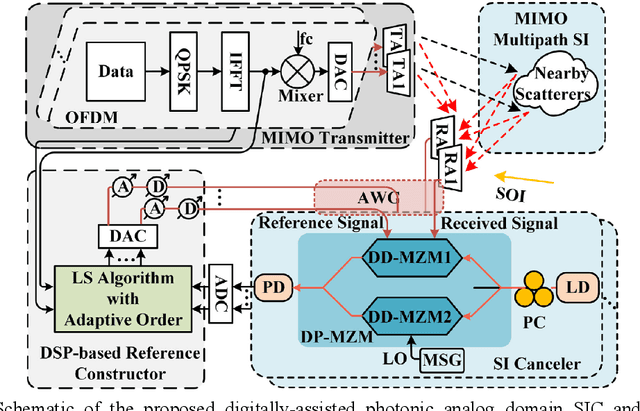
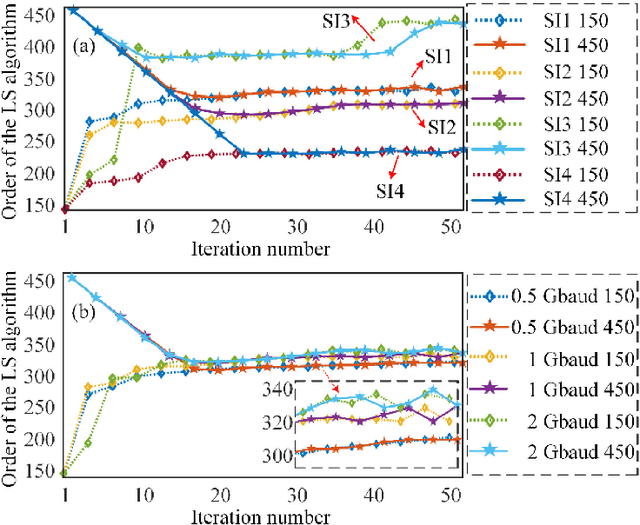
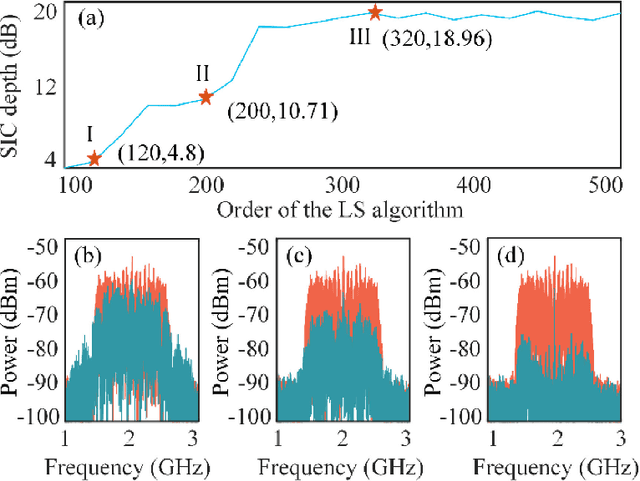
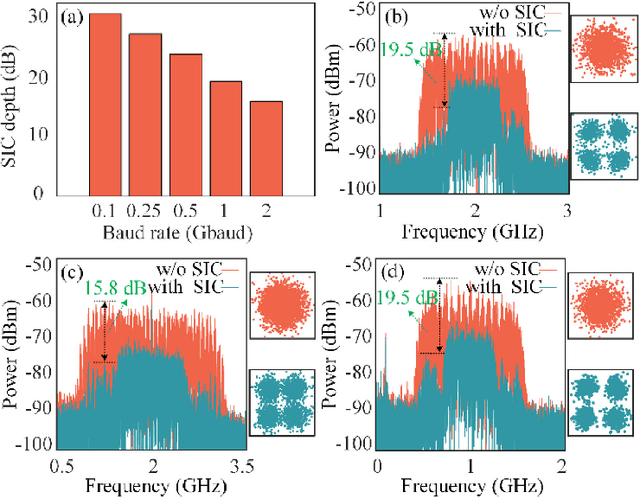
Abstract:A digitally-assisted photonic analog domain self-interference cancellation (SIC) and frequency downconversion method is proposed for in-band full-duplex multiple-input multiple-output (MIMO) systems using the least square (LS) algorithm with adaptive order. The SIC and frequency downconversion are achieved in the optical domain via a dual-parallel Mach-Zehnder modulator (DP-MZM), while the downconverted signal is processed by the LS algorithm with adaptive order that is used to track the response of the multipath self-interference (SI) channel and reconstruct the reference signal for SIC. The proposed method can overcome the reconstruction difficulty of the multipath analog reference signal for SIC with high complexity in the MIMO scenario and can also solve the problem that the order of the reference reconstruction algorithm is not optimized when the wireless environment changes. An experiment is carried out to verify the concept. 30.2, 26.9, 23.5, 19.5, and 15.8 dB SIC depths are achieved when the SI signal has a carrier frequency of 10 GHz and baud rates of 0.1, 0.25, 0.5, 1, and 2 Gbaud, respectively. The convergence of the LS algorithm with adaptive order is also verified for different MIMO multipath SI signals.
Photonics-based de-chirping and leakage cancellation for frequency-modulated continuous-wave radar system
Nov 12, 2021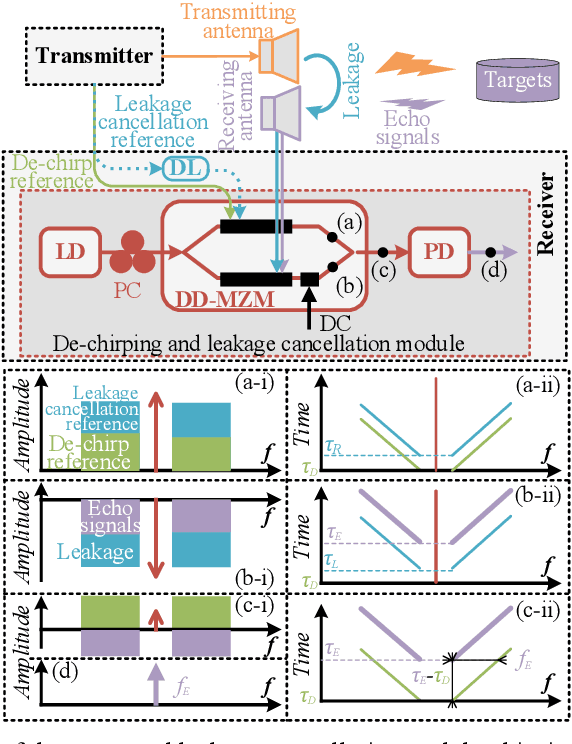
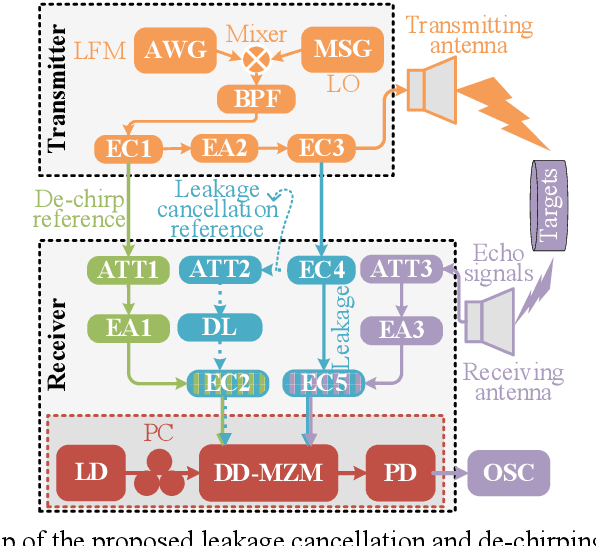
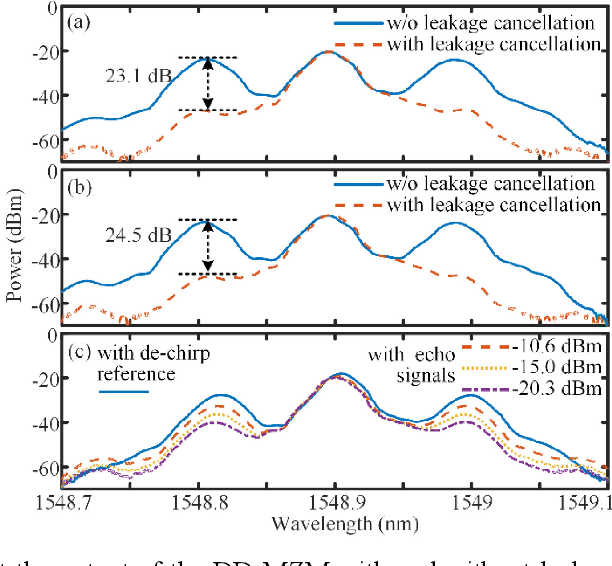
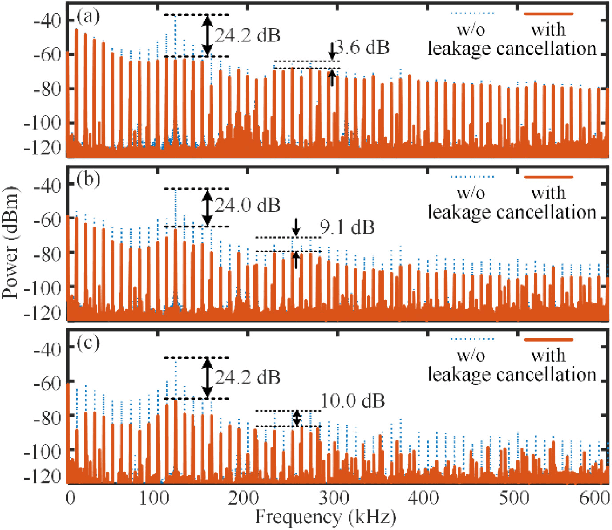
Abstract:A photonics-based leakage cancellation and echo signal de-chirping approach for frequency-modulated continuous-wave radar systems is proposed based on a dual-drive Mach-Zehnder modulator (DD-MZM), with its performance evaluated by the radar measurement and imaging. The de-chirp reference signal and the leakage cancellation reference signal are combined and applied to the upper arm of the DD-MZM, while the received signal including the leakage signal and echo signals is applied to the lower arm of the DD-MZM. When the amplitudes and delays of the leakage cancellation reference signal and the leakage signal are precisely matched and the DD-MZM is biased at the minimum transmission point, the leakage signal is canceled in the optical domain. The de-chirped signals are obtained after the leakage-free optical signal is detected in a photodetector. An experiment is performed. The cancellation depth of the de-chirped leakage signal is around 23 dB when the center frequency and bandwidth of the linearly frequency-modulated signal are 11.5 and 2 GHz. The leakage cancellation scheme is used in a radar system. When the leakage cancellation is not employed, the leakage signal will seriously affect the imaging results and distance measurement accuracy of the radar system. When the leakage cancellation is applied, the imaging results of multiple targets can be clearly distinguished, and the error of the distance measurement results is significantly reduced to 10 cm.
Digital-assisted photonic analog wideband multipath self-interference cancellation
Nov 12, 2021
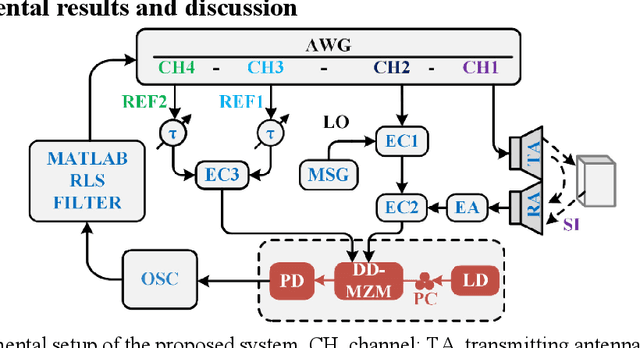


Abstract:A digital-assisted photonic analog wideband radio-frequency multipath self-interference cancellation (SIC) and frequency downconversion method based on a dual-drive Mach-Zehnder modulator and the recursive least square (RLS) algorithm is proposed and demonstrated for in-band full-duplex systems. Besides the reference for the direct-path self-interference (SI) signal, the RLS algorithm is used to construct another reference for the residual SI signal from the direct path and the SI signals from the reflection paths. The proposed method can solve the performance limitation in the previously reported SIC methods of constructing the multipath SI signal using a single reference caused by the limited dynamic range of the digital-to-analog converter when the direct-path SI signal is much stronger than the sub-weak reflection-path SI signals. An experiment is performed. When the carrier frequency of the multipath SI signal is 10 GHz and the direct-path SI signal is much stronger than the sub-weak multipath SI signal, the cancellation depths of about 26.7 and 26.1 dB are realized with SI baud rates of 0.5 and 1 Gbaud. When the direct-path SI signal and sub-weak multipath SI signal own closer power, the corresponding cancellation depths are 24.7 and 20.8 dB, respectively.
Photonics-assisted wideband RF self-interference cancellation with digital domain amplitude and delay pre-matching
Sep 07, 2021



Abstract:A photonics-based digital and analog self-interference cancellation approach for in-band full-duplex communication systems and frequency-modulated continuous-wave radar systems is reported. One dual-drive Mach-Zehnder modulator is used to implement the analog self-interference cancellation by pre-adjusting the delay and amplitude of the reference signal applied to the dual-drive Mach-Zehnder modulator in the digital domain. The amplitude is determined via the received signal power, while the delay is searched by the cross-correlation and bisection methods. Furthermore, recursive least squared or normalized least mean square algorithms are used to suppress the residual self-interference in the digital domain. Quadrature phase-shift keying modulated signals and linearly frequency-modulated signals are used to experimentally verify the proposed method. The analog cancellation depth is around 20 dB, and the total cancellation depth is more than 36 dB for the 2-Gbaud quadrature phase-shift keying modulated signals. For the linearly frequency-modulated signals, the analog and total cancellation depths are around 19 dB and 34 dB, respectively.
 Add to Chrome
Add to Chrome Add to Firefox
Add to Firefox Add to Edge
Add to Edge